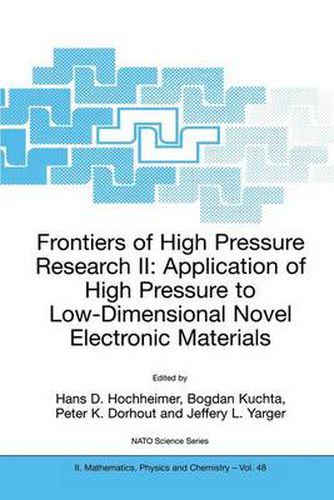Readings Newsletter
Become a Readings Member to make your shopping experience even easier.
Sign in or sign up for free!
You’re not far away from qualifying for FREE standard shipping within Australia
You’ve qualified for FREE standard shipping within Australia
The cart is loading…






This title is printed to order. This book may have been self-published. If so, we cannot guarantee the quality of the content. In the main most books will have gone through the editing process however some may not. We therefore suggest that you be aware of this before ordering this book. If in doubt check either the author or publisher’s details as we are unable to accept any returns unless they are faulty. Please contact us if you have any questions.
In recent interactions with industrial companies it became quite obvious, that the search for new materials with strong anisotropic properties are of paramount importance for the development of new advanced electronic and magnetic devices. The questions concerning the tailoring of materials with large anisotropic electrical and thermal conductivity were asked over and over again. It became also quite clear that the chance to answer these questions and to find new materials which have these desired properties would demand close collaborations between scientists from different fields. Modem techniques ofcontrolled materials synthesis and advances in measurement and modeling have made clear that multiscale complexity is intrinsic to complex electronic materials, both organic and inorganic. A unified approach to classes of these materials is urgently needed, requiring interdisciplinary input from chemistry, materials science, and solid state physics. Only in this way can they be controlled and exploited for increasingly stringent demands oftechnology. The spatial and temporal complexity is driven by strong, often competing couplings between spin, charge and lattice degrees offreedom, which determine structure-function relationships. The nature of these couplings is a sensitive function of electron-electron, electron-lattice, and spin-lattice interactions; noise and disorder, external fields (magnetic, optical, pressure, etc. ), and dimensionality. In particular, these physical influences control broken-symmetry ground states (charge and spin ordered, ferroelectric, superconducting), metal-insulator transitions, and excitations with respect to broken-symmetries created by chemical- or photo-doping, especially in the form of polaronic or excitonic self-trapping.
$9.00 standard shipping within Australia
FREE standard shipping within Australia for orders over $100.00
Express & International shipping calculated at checkout
This title is printed to order. This book may have been self-published. If so, we cannot guarantee the quality of the content. In the main most books will have gone through the editing process however some may not. We therefore suggest that you be aware of this before ordering this book. If in doubt check either the author or publisher’s details as we are unable to accept any returns unless they are faulty. Please contact us if you have any questions.
In recent interactions with industrial companies it became quite obvious, that the search for new materials with strong anisotropic properties are of paramount importance for the development of new advanced electronic and magnetic devices. The questions concerning the tailoring of materials with large anisotropic electrical and thermal conductivity were asked over and over again. It became also quite clear that the chance to answer these questions and to find new materials which have these desired properties would demand close collaborations between scientists from different fields. Modem techniques ofcontrolled materials synthesis and advances in measurement and modeling have made clear that multiscale complexity is intrinsic to complex electronic materials, both organic and inorganic. A unified approach to classes of these materials is urgently needed, requiring interdisciplinary input from chemistry, materials science, and solid state physics. Only in this way can they be controlled and exploited for increasingly stringent demands oftechnology. The spatial and temporal complexity is driven by strong, often competing couplings between spin, charge and lattice degrees offreedom, which determine structure-function relationships. The nature of these couplings is a sensitive function of electron-electron, electron-lattice, and spin-lattice interactions; noise and disorder, external fields (magnetic, optical, pressure, etc. ), and dimensionality. In particular, these physical influences control broken-symmetry ground states (charge and spin ordered, ferroelectric, superconducting), metal-insulator transitions, and excitations with respect to broken-symmetries created by chemical- or photo-doping, especially in the form of polaronic or excitonic self-trapping.